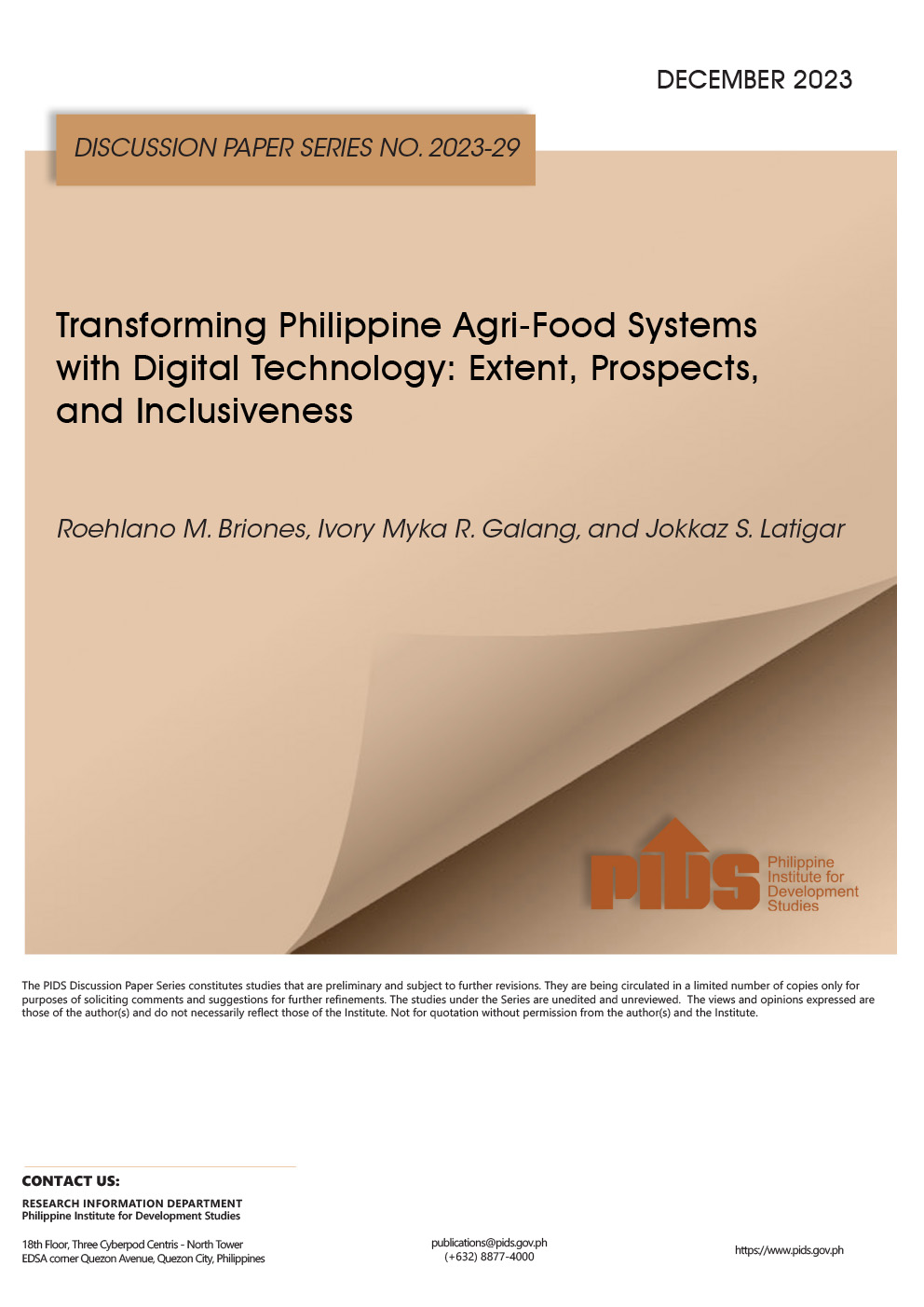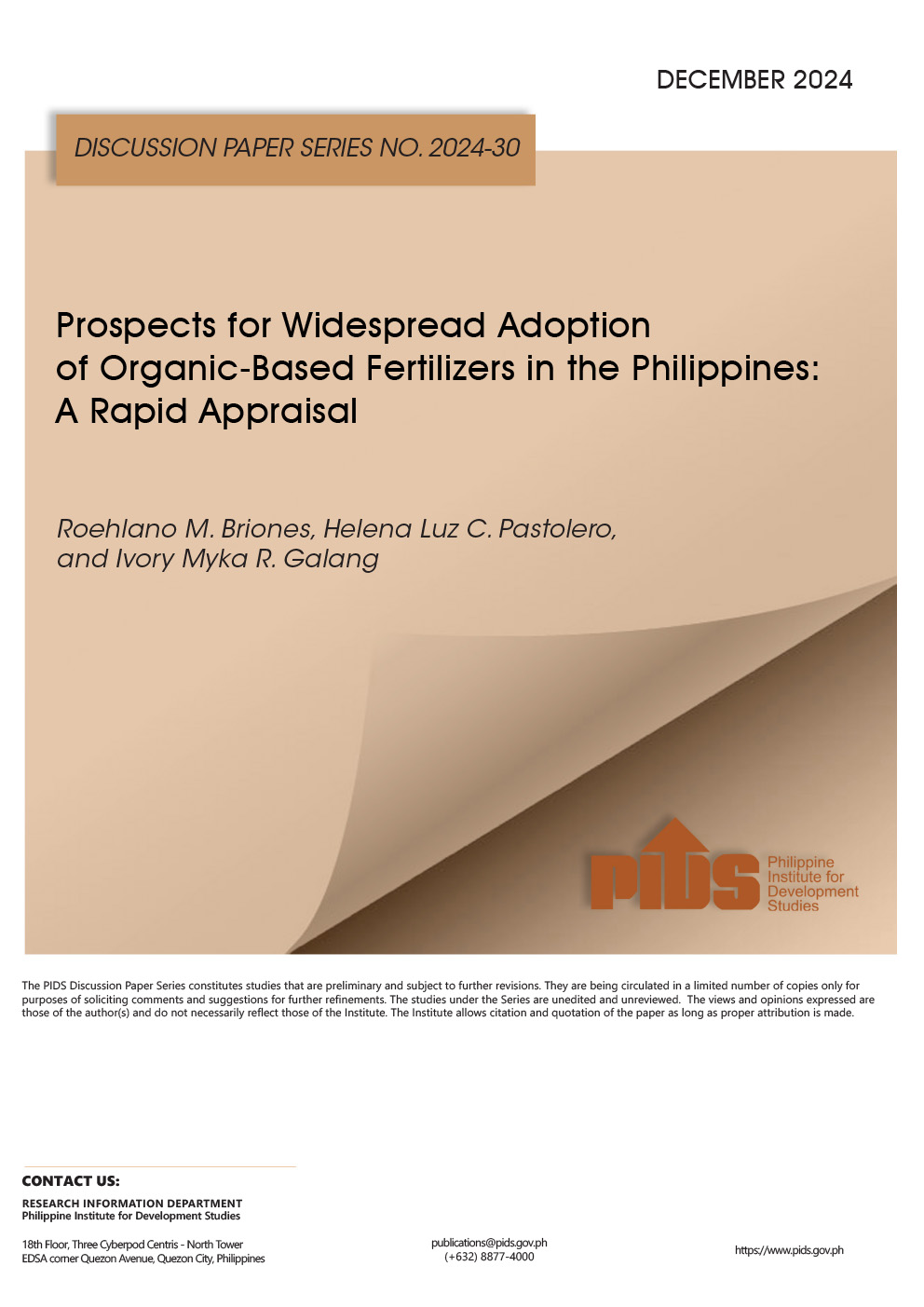At the end of the day, things boil down to economics. And how a country addresses issues related to economics is a measurement of the boiling point. One of those issues involves non-tariff measures, such as quantitative restriction (QR). No other QR has caught the imagination of the country and fellow members at the Association of Southeast Asian Nations (Asean) than that on rice.
The Philippines imposes QRs to protect its local industries from unfair foreign competition. For one, the Philippines has been instituting a QR on rice for more than two decades now to “seal” farmers from competition with cheaper rice produced abroad.
You’re sealing Filipino farmers from foreign competition,” Agriculture Undersecretary for Policy and Planning Segfredo R. Serrano told the BusinessMirror in an earlier interview. “We all know that the [global] trading environment is full of distortions. Do you think international markets are perfectly functioning?
According to Serrano, countries like Vietnam, the United States and those in Europe are imposing subsidization, or what the Organisation for Economic Co-operation and Development (OECD) calls market-price support.
If the foreign trade environment is like that—full of trade distortions—why will you not help the local farmers?” Serrano posited. “Trade must be fair.
Tariffication<
UNDER the General Agreement on Tariff and Trade (GATT), all forms of quantitative restrictions must be eliminated by member-countries of the World Trade Organization (WTO). The elimination meant that WTO member-countries shall convert their respective nontariff measures into tariff rate equivalent that afforded the same level of protection, or a process known as tariffication.
Some forms of QRs include import prohibition, quota allocation, nonautomatic licensing, minimum price-based QR, “voluntary” export restraint, seasonal restriction of QRs and export restrictions, according to the WTO.
However, Philippine Institute Development Studies (Pids) senior research fellow Roehlano M. Briones explained that converting a nontariff measure to a tariff rate equivalent will not really result in the same level of protection.
Briones said the difference between the two measures lies in their ability to respond to changes in demand and supply.
Tariff is an automatic mechanism to make the adjustments because you leave the decision to import in the hands of the importers and traders,” Briones explained in an earlier interview. “You just give them a parameter, called a ‘tariff’, and they make the choice if they are willing to pay the price in bringing in imported goods—whether it’s a million or a zero.
According to Briones, however, “a quota doesn’t have that”
A quota is a quota,” Briones added. “When the demand surges or the supply falls short domestically, and there’s a need to reconsider whether more imports are needed that option is gone…precisely because of the structure of the policy which is a quota.”
THE case is true with the power vested on the National Food Authority (NFA).
Under domestic laws, the NFA is the sole government authority mandated to regulate the importation and exportation of agricultural goods, particularly rice and corn.
The NFA implements the minimum access volume (MAV) commitment of the country to the WTO. The NFA determines whether it will be the private sector or the government that shall utilize the MAV allocation
Furthermore, under Republic Act (RA) 7607, or the Magna Carta of Small Farmers, the government prohibits all importation of agricultural products produced locally in sufficient volume
This means that the country could only import agricultural goods whenever there is an established “shortage” for a certain commodity, according to Briones.
Such import restriction applies in the case of the local onion output. The usual planting season for onion in the country starts in September and ends in May of next year.<
The government, through the Bureau of Plant Industry (BPI), regulates importation of onion in the country by determining if there is a shortfall in production in relation to the local demand.
The BPI does this through meeting with onion industry stakeholders and farmers after the harvest season to evaluate if the total harvest would be sufficient to meet the country’s requirement throughout the year.
If the BPI and the industry stakeholders agree that local supply will not be enough for local demand, then that’s the time that the government allows the private sector to import onion.
Rice
FOR non-governmental organization Rice Watch and Action Network (R1), the imposition for more than two decades of QR on rice did not serve its purpose.
The imposition of QR is supposed to be a transitional mechanism while we pursue the more strategic objective of raising competitiveness of our local rice industry, ensuring highest productivity of our farmers and increased incomes for them,” R1 Executive Director Hazel Tanchuling told the BusinessMirror in an earlier interview.
R1 explained that the imposition of QR on a commodity was meant to protect local producers who would negatively be affected by competing imported products.<
If a QR is in effect, countries normally import the volume that they only need, because too much imports can depress local prices and, thus, negatively affect our farmers,” Tanchuling said.
If Tanchuling is the one going to be asked whether the 22 years of imposing rice QR were enough to prepare the Filipino farmers to go head to head against their counterparts at the Asean, she would say: it should have been.
In terms of productivity per hectare, we would argue that the Filipino farmers have actually pushed its limit,” she said. “We are not actually lagging behind in terms of yield per hectare with other countries in rice production.
Still, Tanchuling admits the cost of production is still high.
Credit, irrigation, labor and [other farm] inputs are costs borne by the Filipino rice farmer. In other countries, credit and inputs are subsidized, and irrigation is free. It is only now that the government is thinking of making irrigation free for farmers,” she added. “These all add up to our ‘uncompetitiveness’. We could have done all these support mechanisms earlier.
Exports
THE government also imposes export restriction, particularly in rice and corn. The NFA oversees the regulation and stabilization of grains prices and supply in the country.
Before farmers could export grains, such as corn, the inter-agency NFA council must first declare that there’s a surplus, according to Presidential Decree (PD) 4.
In the exercise of this power, the Authority shall directly undertake the exportation of rice, corn and other grains and/or their substitutes and/or by-products/end-products whenever there is an excess in production and/or supply, or it may allocate export quotas among certified and licensed exporters,” PD 4 read. “Provided, however, that the council shall first certify after to such excess production and/or supply after proper consultation with the Office of the President.
The Philippine Maize Federation Inc. (Philmaize) has been lobbying for years now to allow the local corn sector to export its produce without the need of the state grains agency’s certification of surplus.
>Unfair
PHILMAIZE President Roger V. Navarro said it is “unfair” that the local corn industry is not allowed to export its produce, while the entry of corn and corn substitutes into the country has been liberalized long ago.
The local farmers are not empowered in the sense that they are restricted to export, but the country is liberalized to corn imports and corn substitutes,” Navarro told the BusinessMirror. “The farmers could not benefit from what they call international parity price of corn.
Navarro argues that if the exportation of corn is liberalized, then local farmers have a “trump card” on situations wherein they could capitalize on the higher price of corn in the market.
For example, the demand in the international market is high and the Philippines has a surplus of corn production, meaning farmers will benefit from such scenario. So everybody has a trump card, we have that option whenever it is needed,” he said. “Because imports are being used as leverage today by importers so that they can depress the price of corn during harvest season. So if we can export, we can also leverage if the price in the international market is up and the price of local market is down.
Disputes
BRIONES said settling a dispute case before the WTO Dispute Settlement Body (DSB) would cost both parties—the plaintiff and defendant—a few hundred thousand dollars to million dollars. The amount would cover the cost of sending representatives and trade and international lawyers to Geneva throughout the process, Briones added.
Serrano, one of the country’s veteran trade negotiators, said the government “stands to face trade disputes immediately” after the country’s waiver expires.
In a bid to evade disputes filed by trading partners against the Philippines before the WTO, the government sought for viable options, while the amendment of RA 8178 is ongoing.
It was RA 8178, or the Agricultural Tariffication Act, that sealed the Philippines’s accession to the WTO. The law mandates the conversion to tariffs of all QRs on agricultural commodities except for rice.
Since then, the Philippine government has eyed to achieve rice self-sufficiency by exploring various programs to improve the rice sector’s competitiveness. These attempts range from distribution of high-yielding rice varieties, mechanization of rice sector, improvement of irrigation systems, construction of farm-to-market roads and establishment of postharvest facilities.
Despite these, the government failed to achieve the ambitious rice-sufficiency target. The consecutive failures in preparing the rice sector to become competitive to its Asean counterparts resulted in the extension of the Philippines’s right to QR before the WTO
One of the options considered by the government, particularly by the Committee on Tariff and Related Matters (CTRM), is to retain the concessions made by the country in securing the waiver in 2014.
Zeroing in
VARIOUS economists and experts have also zeroed in their opinions on a post-QR regime.
In a policy note, titled “Compensatory Payment Scheme for Rice Farmers After Tarrification,” Briones and research analyst Lovely Ann C. Tolin said the removal of the rice QR is expected to boost government revenues due to more rice imports.<
At a tariff rate of 35 percent, the government is expected to generate P27 billion to P28 billion in duties from rice imports, which could reach as much as 2.26 million metric tons (MMT) a year.
Earmarking the rice-tariff revenue to pay for the compensation scheme is a feasible funding strategy,” the authors said in their report published last year. “Residual money from the tariff revenues could be used for other product-enhancement measures for rice farmers.”<
The influx of rice imports, the study stated, will lower paddy-rice prices by P4.56 and P6.97 per kilogram at the farm gate and retail level, respectively.
The impact on farmers’ incomes of the removal of the QR, the researchers said, should compel the government to compensate them.
Farmers cultivating 2 hectares of irrigated land should receive around P19,000 a year, according to the study.
This is greater than transfer per household from the Conditional Cash Transfer [CCT] Program, which is P15,000 for three children,” the researchers said. “Note that compensatory payments can be received simultaneously with the CCT.
>Asked whether the QR has served its purpose for more than two decades the rice sector was under such regime, Briones said: Yes, but on the perspective of price stability.
I think that to a great extent, especially during normal periods and assuming that the objective of the QR was to maintain stable prices,” Briones told the BusinessMirror. “So we don’t want farmers to experience falling prices because we allow imports to come in.
Then, QR combined with other policies of the NFA, such as the retail rice subsidy, etc., looking at the objective of price stability, by and large, most of the time that was followed,” Briones added. “Excluding some outliers during the years under QR, the prices have been kept stable. So QR has served its purpose.
However, Briones noted that the stability of prices that the country achieved had drawbacks, such as the high price of rice.
You stabilize price at a very high price that penalizes the poor—penalizes the food security of the poor. So was that stability worth it?” Briones said. “If you could have given them a more volatile price but a lower level, I’ll take the lower prices any way and let it fluctuate at around P20 to P22 versus stable price at P38 or fixed at P38.vPost-QR
FOR economist and Virginia Polytechnic Institute and State University senior research fellow Caesar Cororaton, the Department of Agriculture (DA) should provide assistance to rice farmers who will shift to other crops, as this would help boost the farm sector’s productivity.
That’s actually good, if they [rice farmers] move out of rice production and then use the money, amounting to some P24 billion, to train those who are willing to shift to other crops, which are more profitable,” Cororaton told the BusinessMirror.
their paper, titled “Poverty and Distributional Impact of Alternative Policies in the Philippines”, Cororaton and De La Salle University School of Economics Associate Professor Krista Danielle Yu said the removal of the QR on rice would cut land use for palay production by at least 10.02 percent.
They suggested that the government put in place a post-QR regime scheme wherein rice tariffs will be gradually reduced to 25 percent in 10 years. The revenues from rice imports should be given as cash transfer to poor families
The amount of money to be plowed back [to farmers] is more than enough to support their displacement and would result in improvements,” Cororaton said.
Under their suggested post-QR regime scheme, land use for palay production would decline by only 1.5 percent. Cororaton added the 1.5-percent decrease in palay land use, however, would result in higher land utilization for other high-value crops.<
For instance, land use for corn production would increase by 1.83 percent, while land use for coconut and sugar production would expand by 1.41 percent and 1.43 percent, respectively. They also noted that there would be a 2.02-percent hike in the production of other crops.
>Under their suggested post-QR scheme, Cororaton said the income of households, particularly the poorest 10 percent of the country, would increase by at least 23.8 percent due to cheaper rice prices
Cororaton added this would result in a 9.12-percent decline in the country’s poverty incidence and a 26.77-percent cut in poverty severity, or the degree of inequality among the poor.
The results indicate that the control on rice imports is highly regressive because it increases the domestic price of rice and puts significant burden on poor households,” their paper read. “Retaining the protection on domestic palay production through tariffication and earmarking the revenue generated as cash transfer to poor households will reduce poverty considerably by 4 million in 10 years.
Unreliable
SERRANO has slammed the pronouncements of some economists—whom he described as thinking in neoclassical economics—who said purely lifting the rice QR would result in a drastic change in the socioeconomic status of Filipinos.
;So let’s say under a free market, cheaper imported rice will enter the market, say it’s about P20 per kilo,” Serrano said. “Now, according to some of our economists, immediately millions will be lifted from poverty.
In the vernacular, he said this is a simplification of the issue of poverty and its cause.
Eh, kung ganoon, simple lang pala ang solution sa kahirapan. At ang paghihirap ng mamamayang Pilipino ay dahil lang sa bigas.
You can have your sleek economic analyses and probably tell you such [outcome] but that doesn’t really mean that the elements of the socioeconomic environment—in a way you assume—are insignificant,” he added.<
Serrano said not everyone would benefit from cheaper price of commercial rice in the market assuming that the importation of rice would drag down the current price market.
If you are a consumer and believe those ‘neoclassical’ pronouncements and expect prices to go down in the next four years, then you [would] probably be happy because rice will be cheaper according to them,” he said. “But do you think many in the rice-trading business who have experienced high price will pass ‘cheap’ rice cheaply?
He noted that the right price of imported rice in the commercial market should be about P20 per kilo “because their production cost is lower than ours”.
Do you think rice traders will pass it as P20 per kilo? Yes, eventually it will go down, but not immediately,” he added. “There would be profit-taking at first, given the rigid elements in the market.
Should the price of commercial rice in the local market decline due to influx of imported rice, the agriculture undersecretary noted there’s no assurance that the said price level would be maintained, given the volatility of the global rice market
For example, the estimates of some economists that there would be an increased local demand of 3 MMT to 5 MMT of imported rice—which would put pressure in the international market—do you think prices will stay?” Serrano explained. “Do you think that even if you have increased your demand internationally, and you still import, the local price would remain at P20 per kilo? What could happen is that the current price of rice in the commercial market today would be eventually the price in a post-QR regime, due to increased price in the international market,” Serrano added.
According to him, the country will “end up in a situation that you are now totally dependent on the international market, which is unreliable.












